I am using SURF descriptors for image matching. I am planning to match a given image to a database of images.
import cv2
import numpy as np
surf = cv2.xfeatures2d.SURF_create(400)
img1 = cv2.imread('box.png',0)
img2 = cv2.imread('box_in_scene.png',0)
kp1,des1 = surf.detectAndCompute(img1,None)
kp2,des2 = surf.detectAndCompute(img2,None)
bf = cv2.BFMatcher(cv2.NORM_L1,crossCheck=True)
#I am planning to add more descriptors
bf.add(des1)
bf.train()
#This is my test descriptor
bf.match(des2)
The issue is with bf.match is that I am getting the following error:
OpenCV Error: Assertion failed (type == src2.type() && src1.cols == src2.cols && (type == CV_32F || type == CV_8U)) in batchDistance, file /build/opencv/src/opencv-3.1.0/modules/core/src/stat.cpp, line 3749
Traceback (most recent call last):
File "image_match4.py", line 16, in <module>
bf.match(des2)
cv2.error: /build/opencv/src/opencv-3.1.0/modules/core/src/stat.cpp:3749: error: (-215) type == src2.type() && src1.cols == src2.cols && (type == CV_32F || type == CV_8U) in function batchDistance
The error is similar to this post. The explanation given is incomplete and inadequate.I want to know how to resolve this issue. I have used ORB descriptors as well with BFMatcher having NORM_HAMMING distance. The error resurfaces.
Any help will be appreciated.
The two images that I have used for this are:
box.png
box_in_scene.png
I am using Python 3.5.2 and OpenCV 3.1.x in linux.

